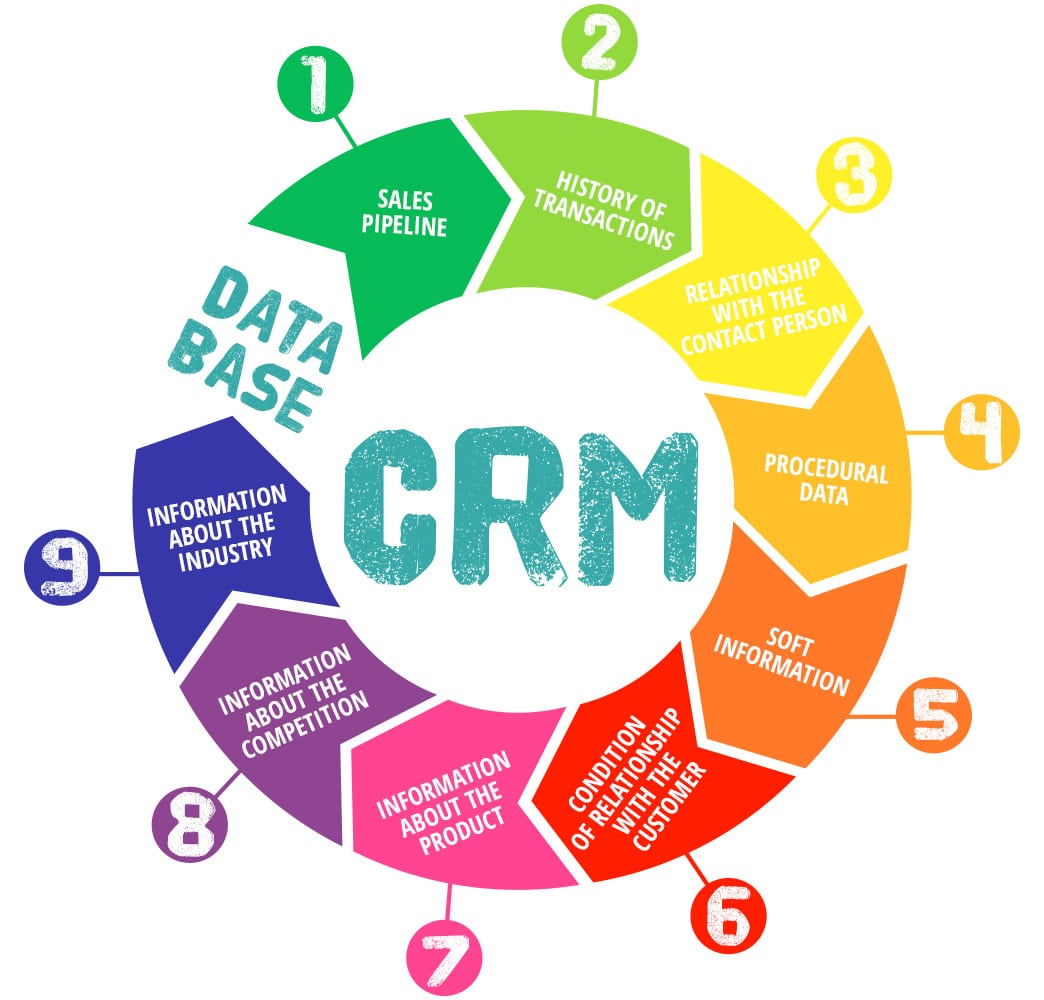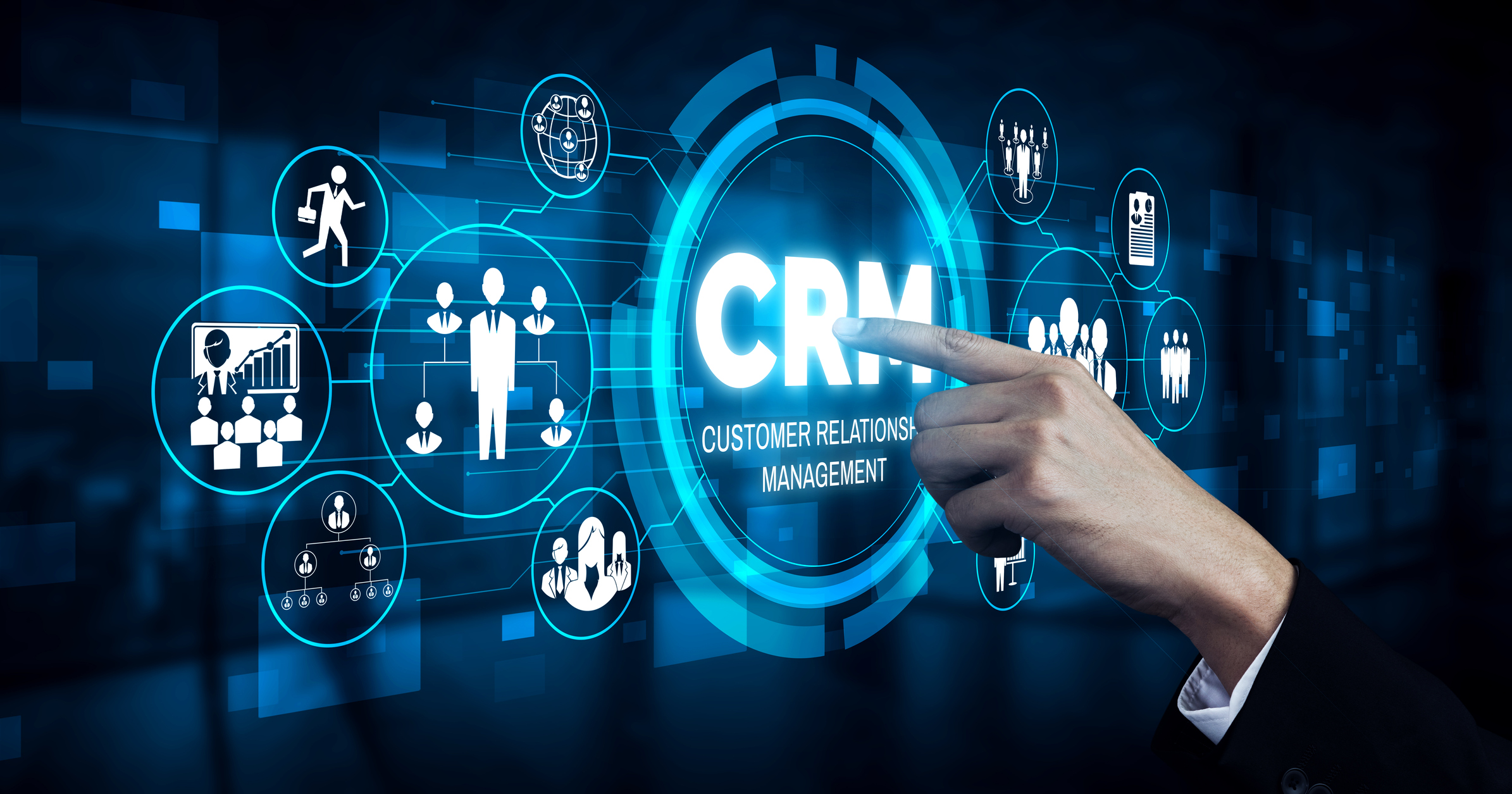Marketing and CRM, a dynamic duo, have revolutionized the way businesses connect with their customers. This comprehensive guide delves into the intricate relationship between these two disciplines, exploring their benefits and unlocking the secrets to effective integration for enhanced customer engagement and business growth.
Harnessing the power of CRM for marketing automation streamlines tasks, personalizes campaigns, and enables data-driven decision-making. By integrating these tools, businesses can nurture customer relationships, drive conversions, and gain a competitive edge in today’s digital landscape.
Marketing and CRM: A Comprehensive Overview

In today’s business landscape, marketing and customer relationship management (CRM) are two essential functions that work hand-in-hand to drive growth and customer satisfaction. Marketing focuses on attracting and engaging potential customers, while CRM focuses on managing and nurturing relationships with existing customers.
By integrating these two disciplines, businesses can create a cohesive and effective customer-centric strategy.
Defining Marketing and CRM
Marketing is the process of creating, communicating, delivering, and exchanging offerings that have value for customers, clients, partners, and society at large. It involves understanding customer needs, developing marketing strategies, and executing marketing campaigns to reach target audiences. CRM, on the other hand, is a system that helps businesses manage their interactions with customers throughout their lifecycle.
It includes tools for tracking customer data, managing customer relationships, and providing personalized experiences.
The Relationship Between Marketing and CRM
Marketing and CRM are closely related and mutually supportive. Marketing generates leads and drives customer acquisition, while CRM helps nurture those leads and build long-term relationships. Marketing provides insights into customer behavior and preferences, which can be used to tailor CRM strategies and improve customer experiences.
Conversely, CRM data can be used to segment customers and target marketing campaigns more effectively.
Benefits of Integrating Marketing and CRM
- Improved customer experience:By integrating marketing and CRM, businesses can provide a consistent and personalized experience across all touchpoints.
- Increased customer loyalty:CRM helps businesses track customer interactions and identify opportunities to build relationships and increase loyalty.
- Enhanced lead generation:Marketing can use CRM data to identify potential customers and target them with relevant marketing campaigns.
- Improved sales performance:CRM provides sales teams with valuable insights into customer behavior and preferences, enabling them to close deals more effectively.
- Increased profitability:By integrating marketing and CRM, businesses can optimize their marketing spend and improve their overall profitability.
CRM for Marketing Automation
CRM (Customer Relationship Management) systems can streamline and automate various marketing tasks, enhancing efficiency and effectiveness. By integrating marketing automation tools with CRM, businesses can automate repetitive processes, personalize customer interactions, and gain valuable insights.
Examples of Marketing Automation Using CRM
- Email Marketing:Automating email campaigns based on customer segmentation, behavior, and preferences.
- Lead Generation:Capturing and qualifying leads through automated forms, landing pages, and email sequences.
- Lead Nurturing:Providing personalized content and communications to guide leads through the sales funnel.
- Social Media Marketing:Scheduling and publishing social media posts, monitoring brand mentions, and engaging with customers.
- Customer Segmentation:Dividing customers into groups based on demographics, behavior, and interests for targeted marketing campaigns.
Best Practices for Implementing Marketing Automation with CRM
- Define Clear Goals:Determine specific objectives for marketing automation, such as increasing lead conversion rates or improving customer engagement.
- Integrate Seamlessly:Ensure seamless integration between CRM and marketing automation tools to avoid data silos and maintain consistency.
- Use Segmentation Effectively:Leverage customer segmentation to tailor marketing campaigns and provide personalized experiences.
- Monitor and Analyze Results:Track key metrics to evaluate the effectiveness of marketing automation campaigns and make data-driven adjustments.
- Embrace Automation:Automate as many repetitive tasks as possible to free up marketing teams for more strategic initiatives.
Data Management and Analysis
Data management and analysis are critical for effective marketing and CRM strategies. By collecting, organizing, and analyzing data, businesses can gain valuable insights into customer behavior, preferences, and trends.
The types of data that can be collected and analyzed include:
- Customer demographics (e.g., age, gender, location)
- Customer behavior (e.g., website visits, product purchases)
- Marketing campaign performance (e.g., email open rates, click-through rates)
- CRM system data (e.g., customer support interactions, sales pipeline)
Methods for Analyzing Data
There are various methods for analyzing data to improve marketing and CRM strategies, including:
- Descriptive statistics (e.g., mean, median, mode)
- Inferential statistics (e.g., hypothesis testing, regression analysis)
- Data visualization (e.g., charts, graphs)
- Machine learning (e.g., predictive modeling, customer segmentation)
By analyzing data effectively, businesses can identify opportunities for improvement, personalize marketing campaigns, enhance customer experiences, and ultimately drive growth.
Customer Segmentation and Targeting
Customer segmentation and targeting are essential strategies for businesses to effectively reach and engage their target audience. Segmentation involves dividing customers into distinct groups based on shared characteristics, while targeting focuses on selecting the most relevant segments to align marketing efforts.
Benefits of Customer Segmentation and Targeting, Marketing and crm
- Improved marketing efficiency by focusing on specific customer needs.
- Increased customer satisfaction and loyalty through tailored communication.
- Optimized marketing campaigns with higher conversion rates.
- Enhanced brand positioning by targeting the right customers.
Effective Customer Segmentation and Targeting Strategies
Effective customer segmentation and targeting strategies consider various factors such as demographics, psychographics, behavior, and purchase history.
- Demographic segmentation:Dividing customers based on age, gender, income, education, etc.
- Psychographic segmentation:Grouping customers based on values, beliefs, attitudes, and lifestyles.
- Behavioral segmentation:Classifying customers based on their purchasing habits, usage patterns, and loyalty.
- Purchase history segmentation:Segmenting customers based on their past purchases, frequency, and amount spent.
By combining these segmentation techniques, businesses can create targeted marketing campaigns that resonate with specific customer segments, leading to increased engagement and conversions.
Personalization and Customer Engagement
Personalization is crucial in marketing and CRM as it enhances customer experiences, builds stronger relationships, and drives business growth. By tailoring marketing messages, content, and interactions to individual customer preferences, businesses can increase engagement, conversion rates, and customer loyalty.
Examples of personalized marketing campaigns include:
- Personalized email campaigns with customized subject lines and content based on customer demographics, interests, and past behavior.
- Targeted ads on social media platforms that are tailored to specific customer segments based on their browsing history and preferences.
- Personalized product recommendations on e-commerce websites based on customer purchase history and browsing behavior.
Best Practices for Improving Customer Engagement
To improve customer engagement, businesses should focus on:
- Understanding customer needs and preferences:Conduct thorough market research, gather customer feedback, and analyze customer data to gain insights into their wants, needs, and pain points.
- Creating valuable and relevant content:Develop high-quality content that is informative, engaging, and tailored to the specific interests of target customers.
- Using multiple channels to reach customers:Engage with customers through various channels such as email, social media, SMS, and live chat to provide a seamless and personalized experience.
- Personalizing interactions:Use customer data to personalize communications, offers, and recommendations to create a more relevant and meaningful experience for each customer.
- Measuring and tracking engagement metrics:Regularly monitor key engagement metrics such as open rates, click-through rates, and conversion rates to assess the effectiveness of marketing campaigns and make data-driven improvements.
Measuring and Reporting

Measuring and reporting the effectiveness of marketing and CRM efforts is crucial for optimizing campaigns and demonstrating their impact on business outcomes. By tracking relevant metrics and creating insightful dashboards, businesses can gain valuable insights to drive decision-making and improve overall performance.
Marketing and CRM Metrics
- Marketing Metrics:Website traffic, lead generation, conversion rates, customer lifetime value (CLTV), return on investment (ROI)
- CRM Metrics:Customer satisfaction, customer retention, average revenue per user (ARPU), customer churn rate, net promoter score (NPS)
Marketing and CRM Reporting Dashboards
Dashboards provide a visual representation of key metrics, allowing businesses to monitor performance in real-time. These dashboards can include:
- Campaign Performance Dashboard:Tracks campaign results, such as lead generation, conversion rates, and ROI.
- Customer Engagement Dashboard:Monitors customer interactions, including website visits, email open rates, and social media engagement.
- Customer Lifetime Value Dashboard:Analyzes customer spending patterns and predicts future revenue potential.
Tips for Optimizing Reporting
- Set Clear Goals:Define specific objectives for your marketing and CRM efforts to guide your reporting.
- Choose Relevant Metrics:Select metrics that align with your goals and provide actionable insights.
- Use Visualizations:Present data in easy-to-understand charts, graphs, and tables to facilitate analysis.
- Automate Reporting:Utilize software tools to automate data collection and reporting processes, saving time and ensuring accuracy.
- Share Insights:Regularly communicate reporting results to stakeholders, providing context and recommendations for improvement.
Final Summary: Marketing And Crm

In conclusion, marketing and CRM are indispensable tools for businesses seeking to build lasting customer relationships. By embracing a data-centric approach, implementing effective segmentation strategies, and leveraging the power of personalization, businesses can create a seamless customer journey that drives loyalty, increases revenue, and ultimately achieves long-term success.
 Lingkupruang.biz.id The Ultimate Guide to CRM Mastery
Lingkupruang.biz.id The Ultimate Guide to CRM Mastery